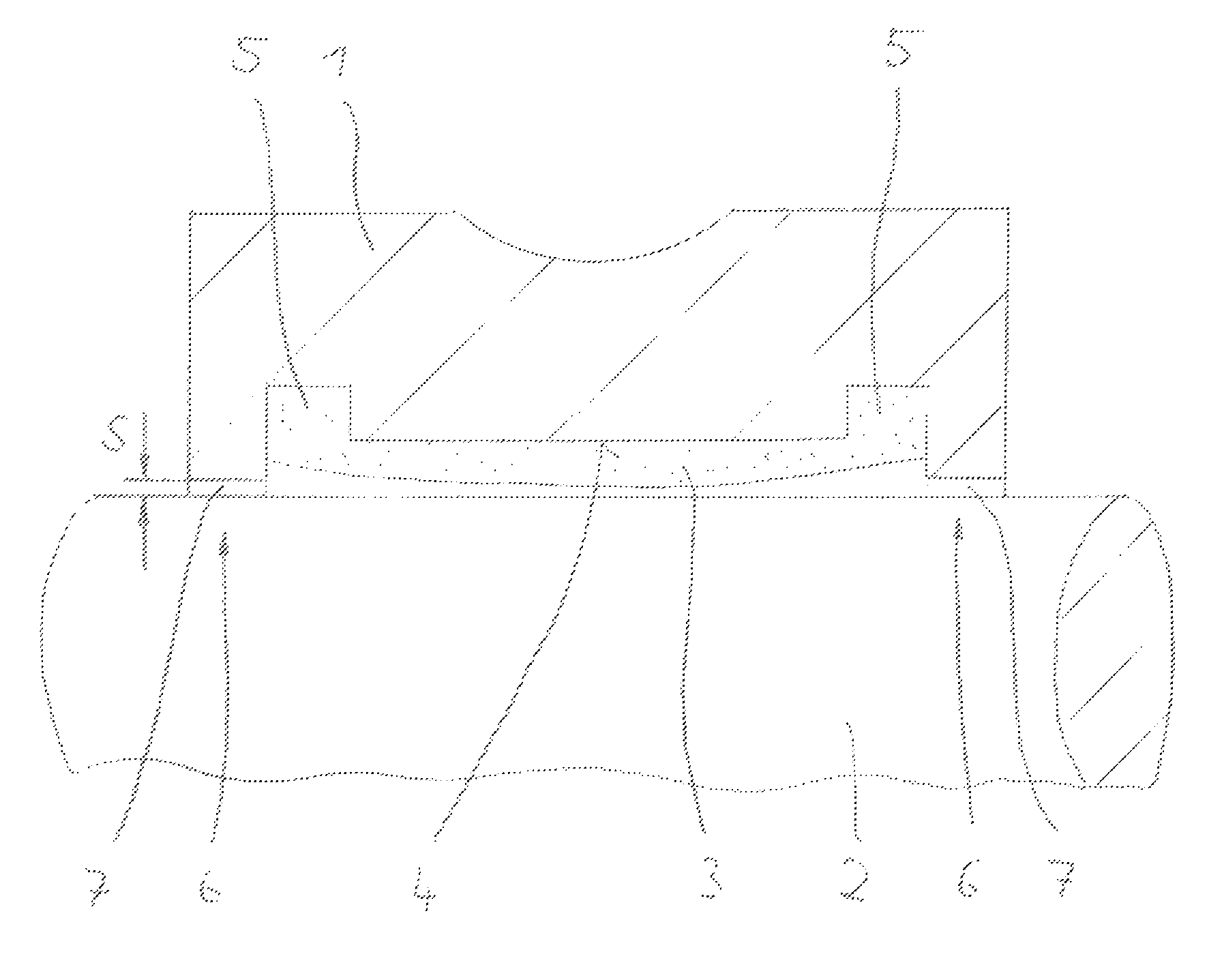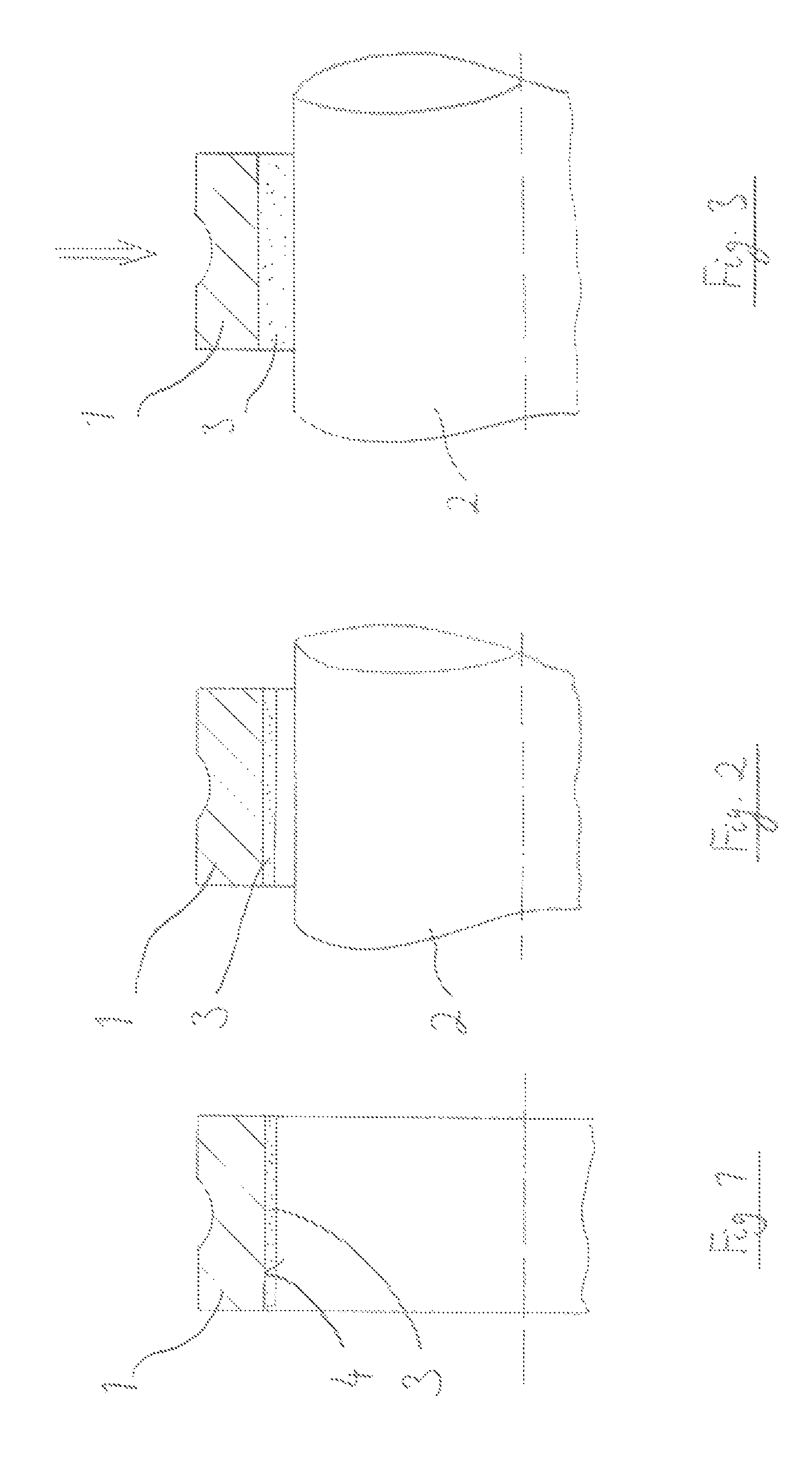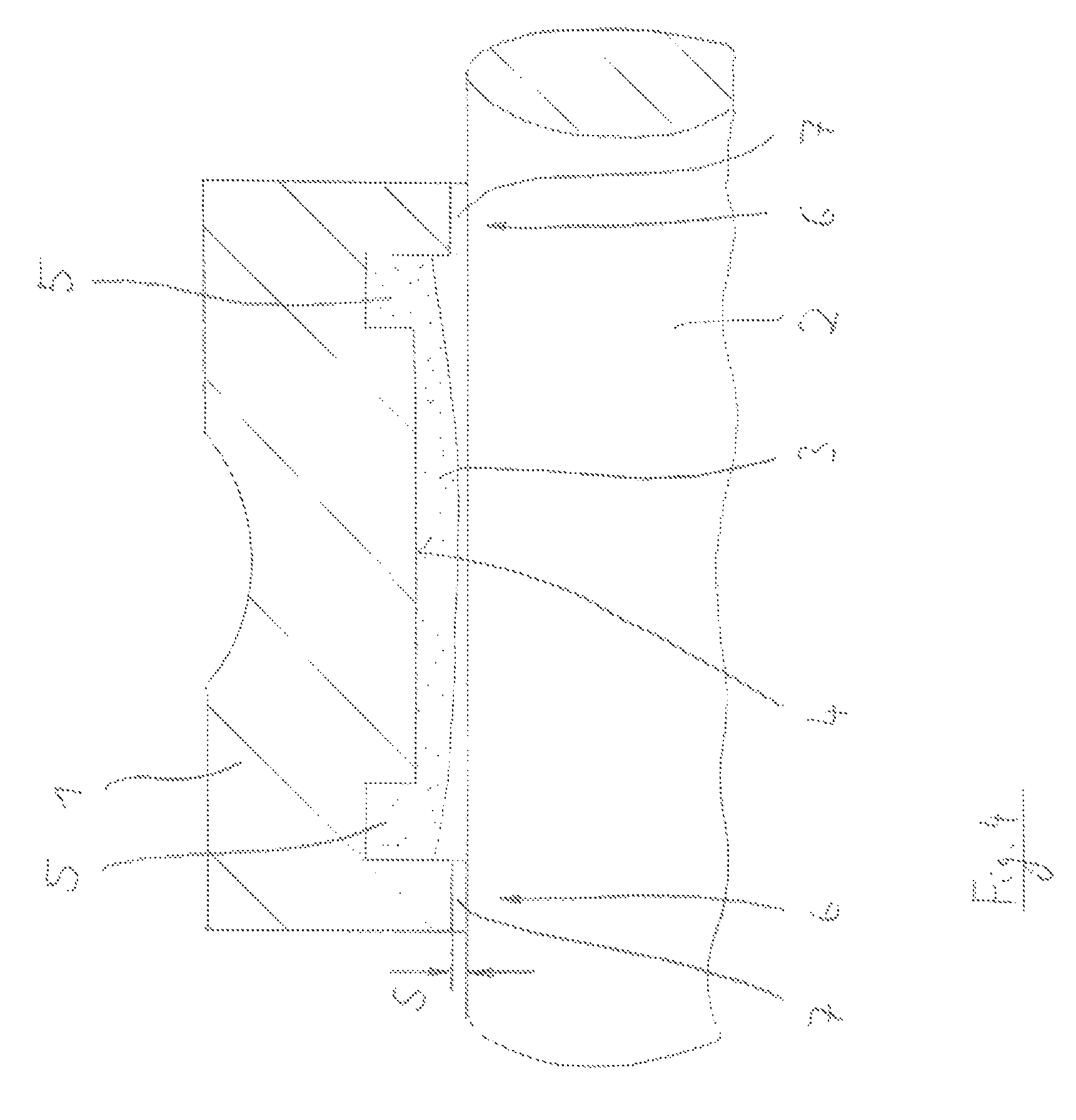Method for fixing a bearing ring on or in a component
a technology for bearing rings and components, applied in the direction of couplings, mechanical devices, rigid support of bearing units, etc., can solve the problems of low precision, large economic cost of attachment, and requirement of at least three components, and achieve the effect of stable adhesive bonding
- Summary
- Abstract
- Description
- Claims
- Application Information
AI Technical Summary
Benefits of technology
Problems solved by technology
Method used
Image
Examples
Embodiment Construction
[0037]In FIG. 1 an inner ring 1 of a ball bearing is drawn, which ball bearing is to be connected with a shaft that is not depicted in FIG. 1, and namely through an adhesive process. For this purpose an adhesive 3 is applied to the inner cylindrical surface 4 of the inner ring 1. This adhesive 3 has, when applied to the inner ring 1, a pasty consistency. When it is applied, a pre-curing of the adhesive 3 occurs. This can occur in the air through a sufficiently long holding of the inner ring 1 together with adhesive 3. The adhesive 3“dries” in this way, so that the adhesive layer not only obtains a certain mechanical stability, but also no longer significantly adheres when the adhesive 3 is touched. Accordingly, the further handling of inner ring 1 provided with adhesive 3 is simple, as no special precautions must be taken during the handling and / or during the transport.
[0038]The thus-prepared inner ring 1 (which of course may already be connected with the not-depicted bearing outer ...
PUM
| Property | Measurement | Unit |
|---|---|---|
| temperatures | aaaaa | aaaaa |
| temperatures | aaaaa | aaaaa |
| glass transition temperature | aaaaa | aaaaa |
Abstract
Description
Claims
Application Information
 Login to View More
Login to View More - R&D
- Intellectual Property
- Life Sciences
- Materials
- Tech Scout
- Unparalleled Data Quality
- Higher Quality Content
- 60% Fewer Hallucinations
Browse by: Latest US Patents, China's latest patents, Technical Efficacy Thesaurus, Application Domain, Technology Topic, Popular Technical Reports.
© 2025 PatSnap. All rights reserved.Legal|Privacy policy|Modern Slavery Act Transparency Statement|Sitemap|About US| Contact US: help@patsnap.com



